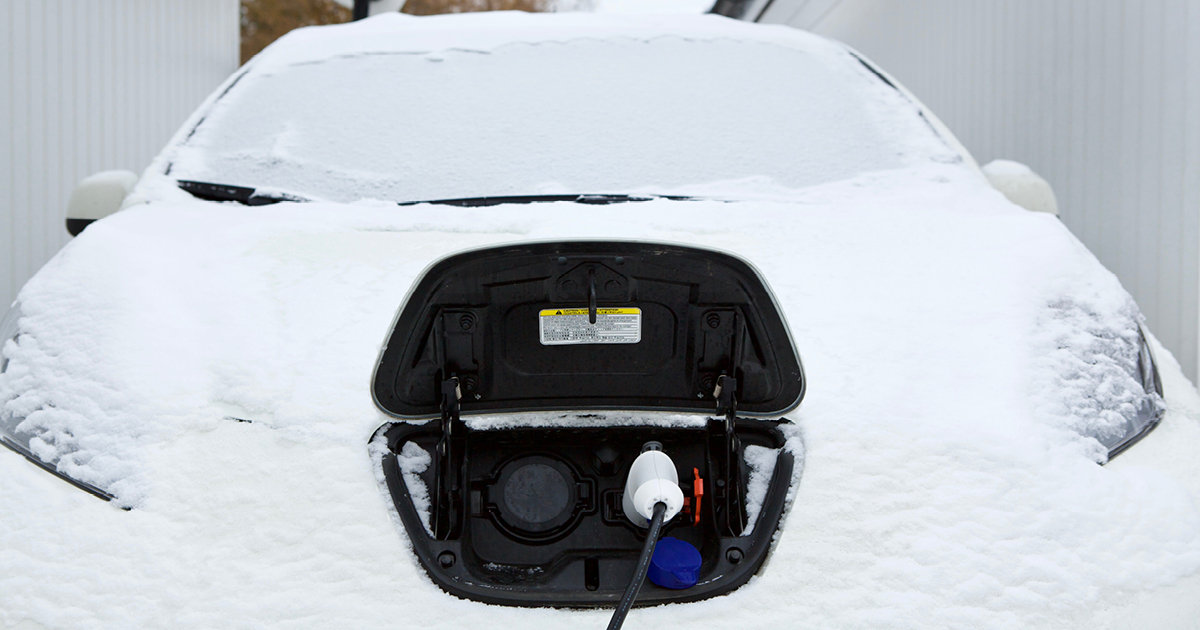Teaching Cold-Weather Maintenance of Electric Vehicles is a Unique Challenge, Here’s Why

In August 2022, the state of California passed a law banning the sale of gas-powered vehicles by the year 2035. Regulations such as this will likely pave the way for an influx of electric vehicles (EVs) to hit the road in the coming years. As of today, there are estimated to be just around 2 million EVs on the streets.
As the grip of EVs takes hold in the automotive sector, they bring with them a few issues that must be adapted to when the weather gets cold. Cabin heating, the battery’s thermal conditions and planning for driver range anxiety must all be accounted for when instructing EV maintenance. Instructors, following years of teaching gas-powered vehicle maintenance, must learn to impart knowledge on the new fleet of vehicles hitting the road in the coming years. Read on for a few tips on teaching the key areas of cold-weather EV maintenance.
Cabin Heating
Because the EV doesn’t have a conventional internal combustion engine (ICE) present in the vehicle, cabin heating must exclusively rely on electrical power to condition the inside environment.
One of the ways that EV’s condition the cabin is using a heat pump. Similar to a heat pump on a residential building, utilizing the physics of the AC refrigerant, the system can choose to move the “exhausted heat” from the condenser to the evaporator in the HVAC system. This is possible by using a TX valve to change the direction of the refrigerant cycle to recoup some of the waste heat.
Some manufacturers utilize a multi-directional valve to move the heat anywhere needed within the vehicle. The heat pump is a great efficient way of generating Cold or Hot air. For every watt inputted the net output (depending on load) is 2 to 5 watts. This increase in efficiency allows for a lower power consumption and extended vehicle range.
Around 14 degrees below Fahrenheit, the heat pump system is not very efficient and a Positive Temperature Coefficient (PTC) electric heat is employed to help heat thermal systems once the heat pump efficiencies wane. Combining the thermal control loops on the vehicle allows for a more efficient application.
Battery Pack and Power Electronics Thermal Control
Heating the cabin is just one of the needs of a cold EV. Proper battery pack and power electronics thermal control is necessary in keeping the vehicle in operational condition. Battery chemistry tends to slow or stop around freezing for most cell technologies, so heating the high voltage battery pack is necessary to allow it to provide power in the most efficient way.
This is also the case when the vehicle is plugged in charging, as the electronics will not allow the vehicle to charge until the conditions are right for the high voltage battery pack to accept a charge.
With all this power usage for thermal control, the ability of the vehicle to maintain a usable charge is very taxing on the high voltage battery. The ambient temperature around the battery pack must be considered when working on an operational strategy of the EV and how the vehicle must maintain operation. Couple that with the range anxiety of by the vehicles operator and that makes for a hard adoption by the general public.
To help with keeping the driver and the vehicle happy, the EV must be able to shed load when needed and redirect that power resource to other systems within the car.
Some EV’s utilize thermal storage by the high voltage battery pack to help keep the heat until it is called upon by other systems in the vehicle. Thermal storage is done by directing all the heat from the power electronics and other “waste” heat into the battery pack’s heat sink until supplemental heat is needed to heat up the cabin or other components. Once the battery pack is up and charging and discharging, heat will eventually be generated which can be used to supplement the heat pump heat production or in another aspect of the vehicle.
For more information on teaching cold-weather maintenance for EVs and HEVs, including resources, check out CDX Learning System’s Light Duty Hybrid and Electric Vehicles.